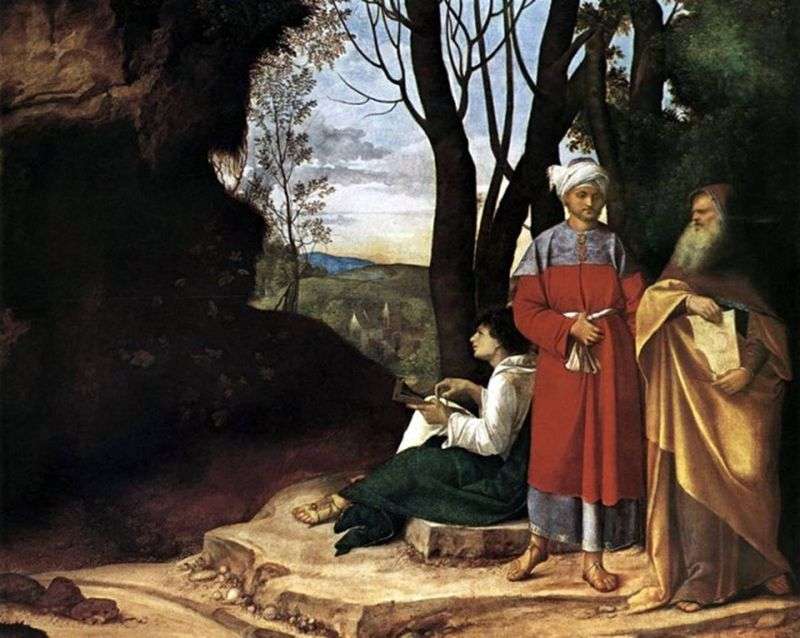
The painting “Three Philosophers” by Italian artist Giorgione. The size of the master’s work is 124 x 145 cm, wood, oil. As mentioned, interest in portrait sharpness is not characteristic of Giorgione’s work. This does not mean that his characters, like the images of classical classical art, lack any specific identity. This is not true. His wise men in the early “Adoration of the Magi” and the philosophers in the painting “The Three Philosophers” differ from each other not only in age, but also in their personal appearance.
Nevertheless, philosophers, for all the individual differences in images, are first of all perceived not so much as unique, vivid, portrayally characterized individualities or, even more so, the image of three ages, as an embodiment of different sides, different facets of the human spirit.
The three philosophers depicted by the artist in the eponymous film are intriguingly vague: the elder, the middle-aged man and the young man, represented next to the dark cave, presumably against the background of a sunset in a mountain valley, may be three magi, and allegories of different sciences, and finally figurative incarnations three different eras in the life of mankind. This interpretation fully applies to the artist’s painting “Three ages of life.”
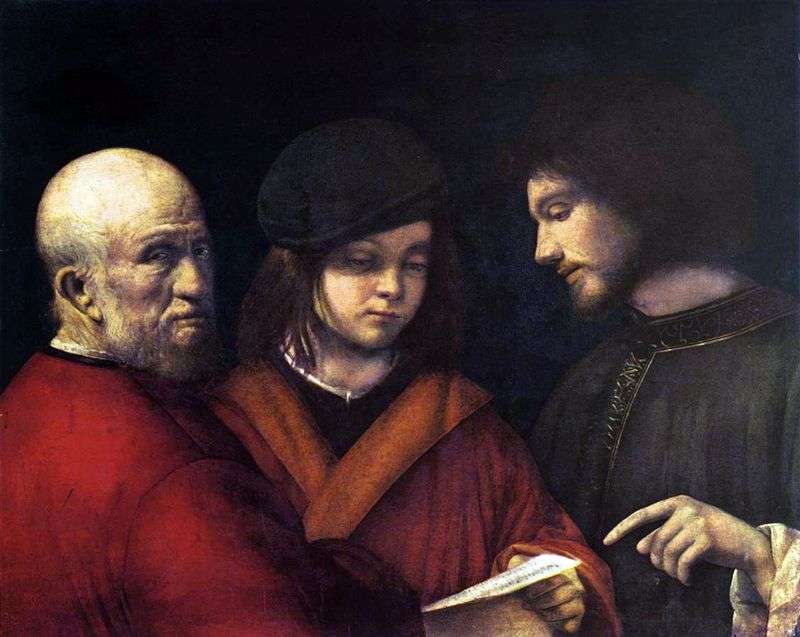 Three ages of life by Giorgione
Three ages of life by Giorgione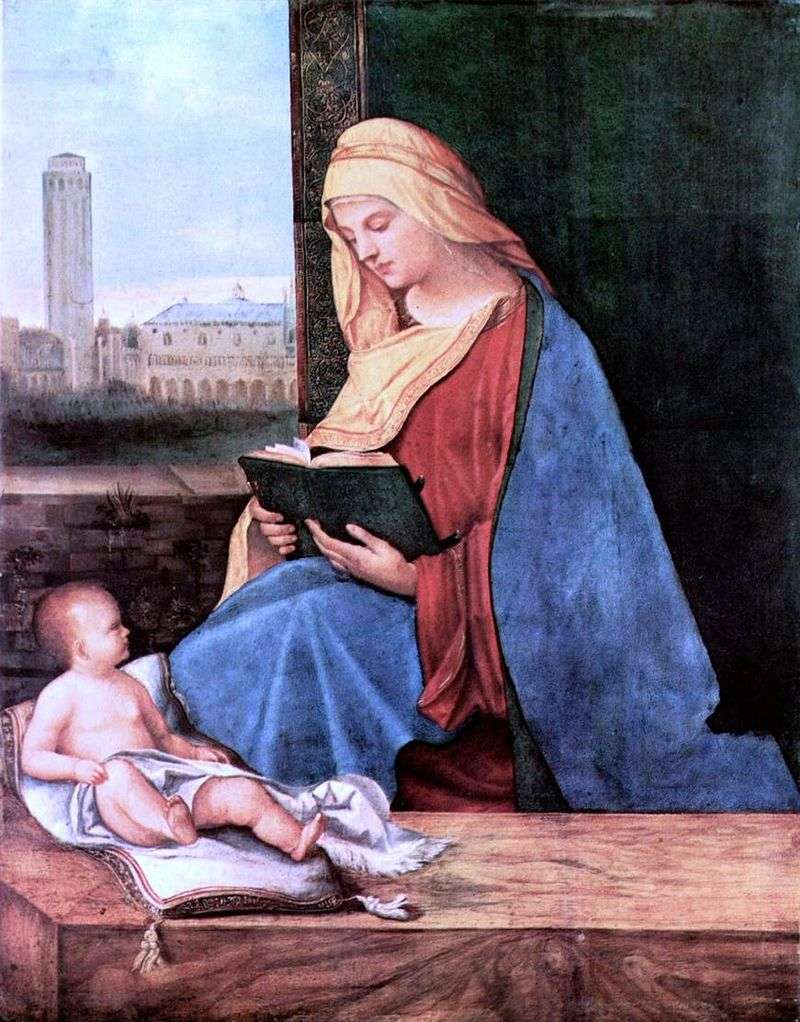 Reading Madonna by Giorgione
Reading Madonna by Giorgione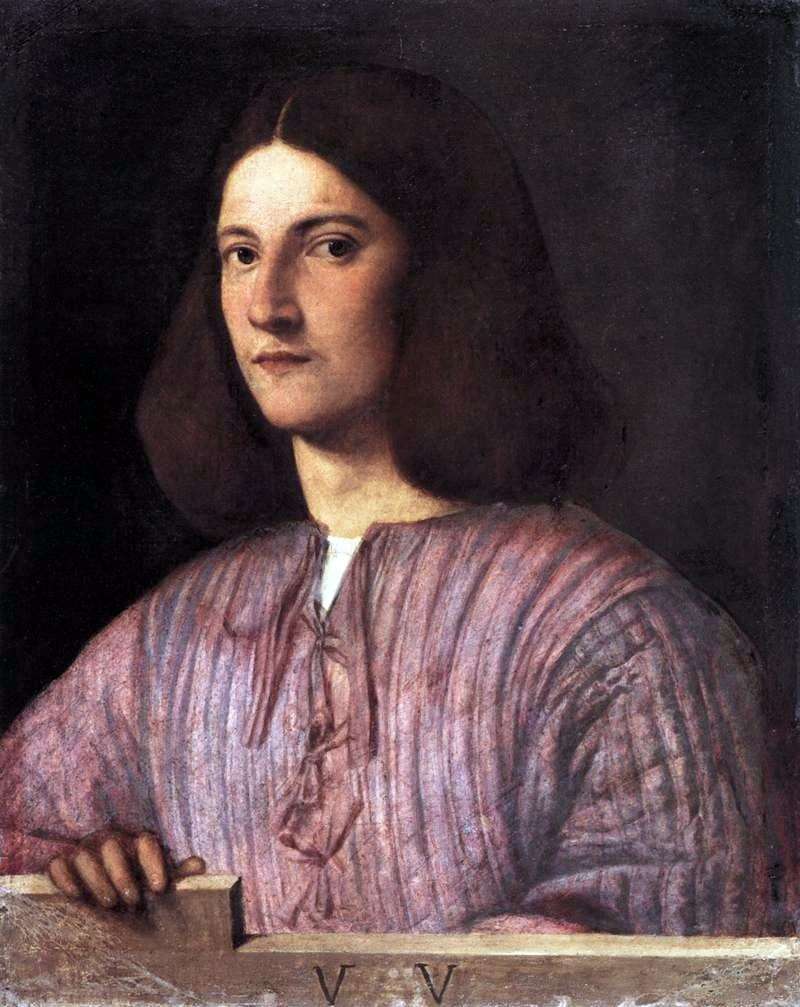 Portrait of a young man by Giorgione
Portrait of a young man by Giorgione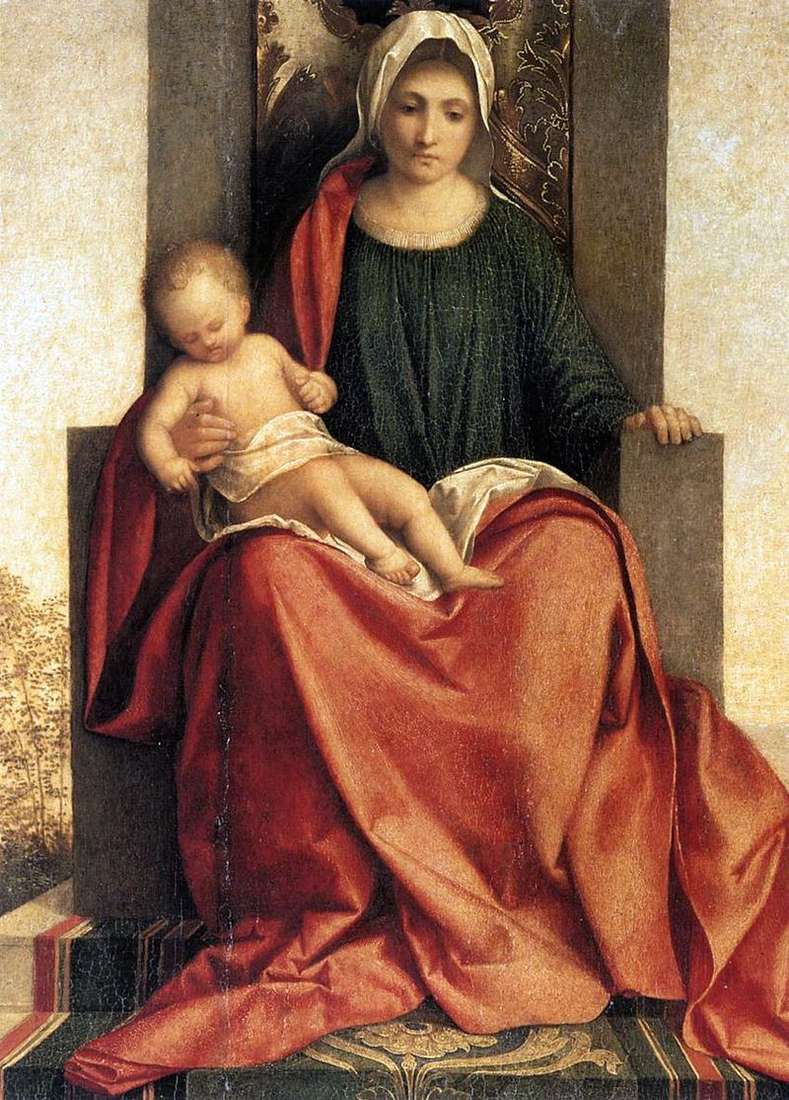 Madonna and Castelfranco by Giorgione
Madonna and Castelfranco by Giorgione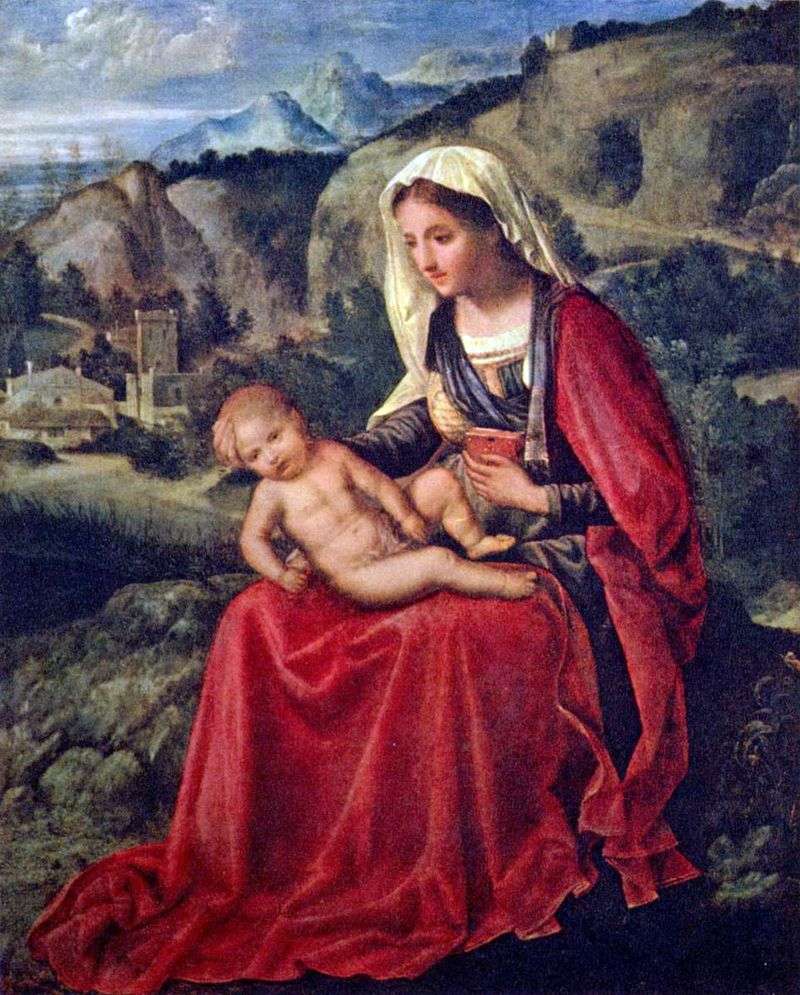 Virgin Mary with a baby in the background of the landscape by Giorgione
Virgin Mary with a baby in the background of the landscape by Giorgione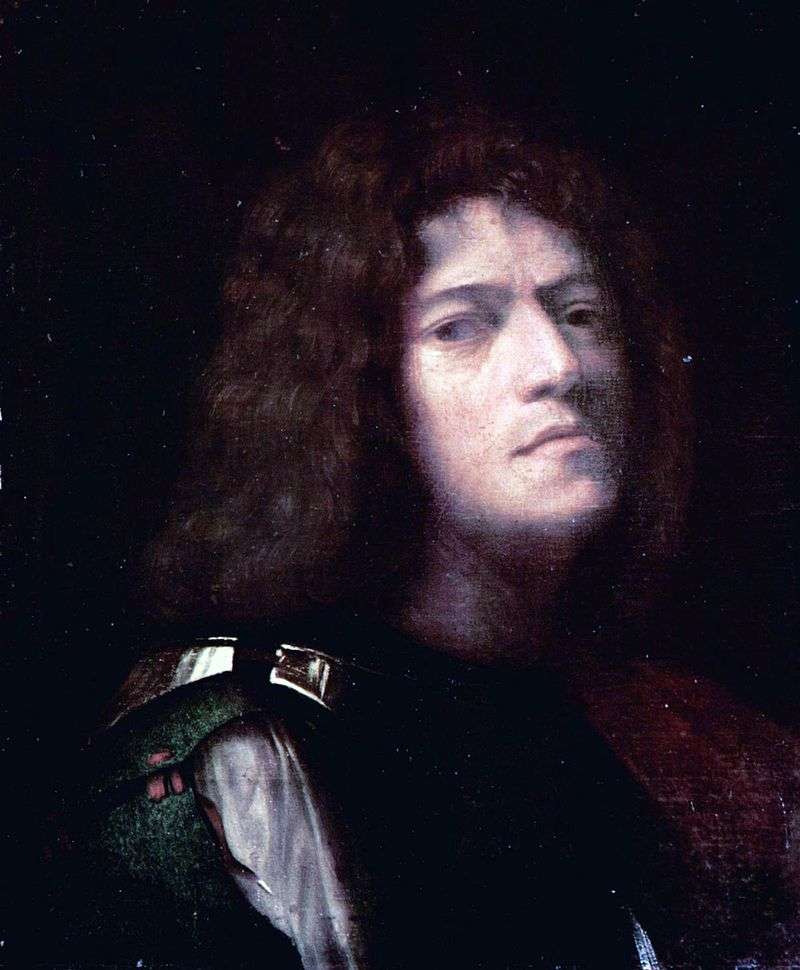 Self-portrait by Giorgione
Self-portrait by Giorgione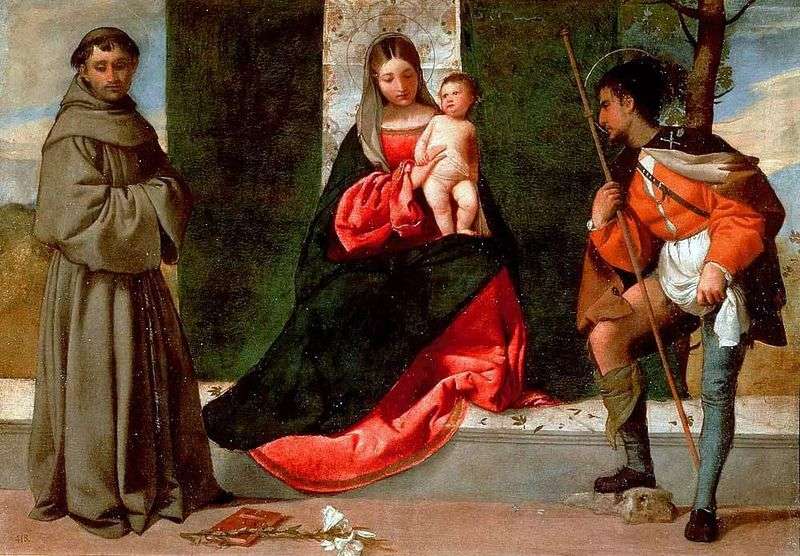 Madonna and Child, Saints Rock and Anthony of Padua by Giorgione
Madonna and Child, Saints Rock and Anthony of Padua by Giorgione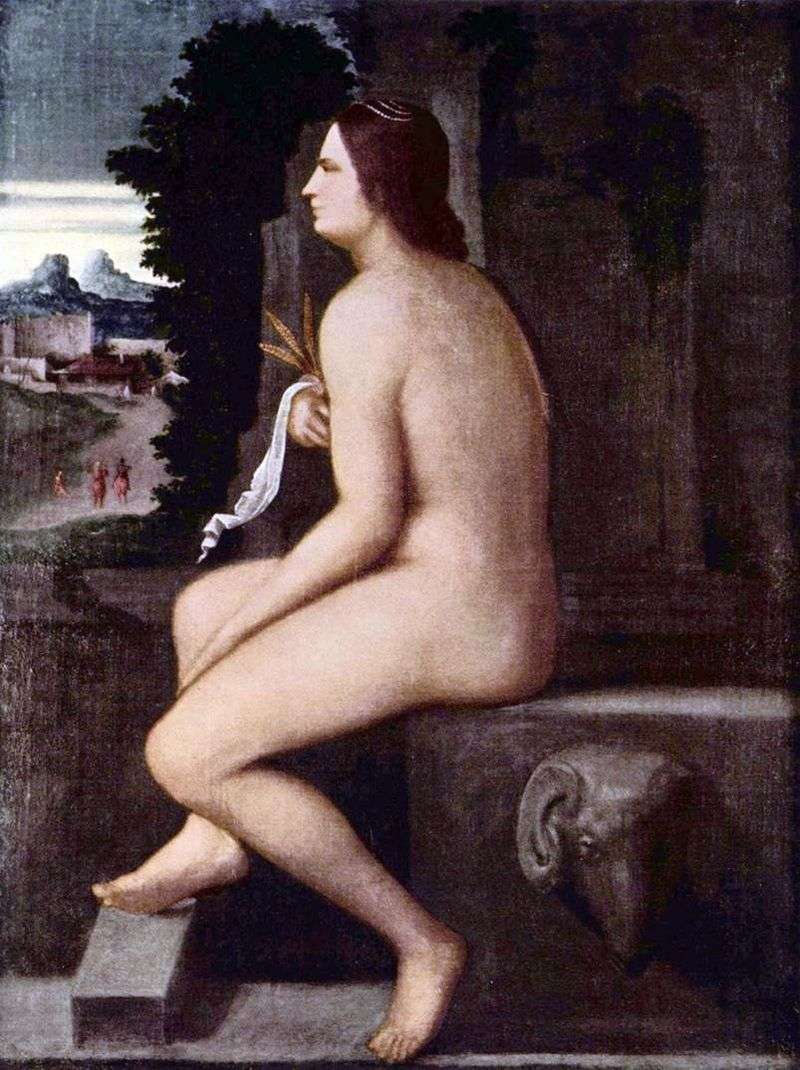 Ceres by Giorgione
Ceres by Giorgione